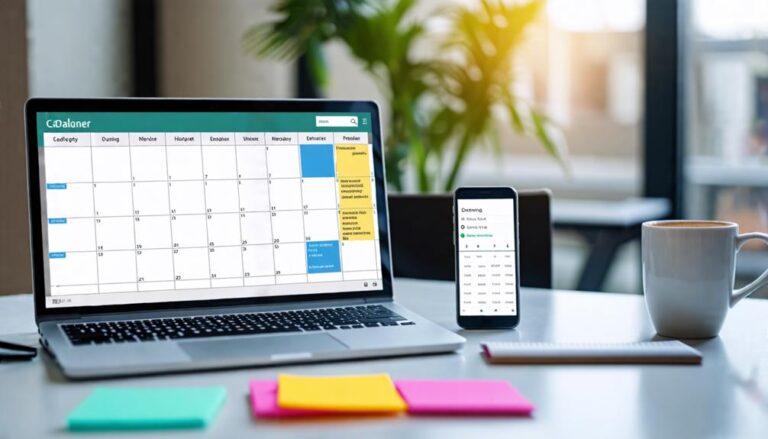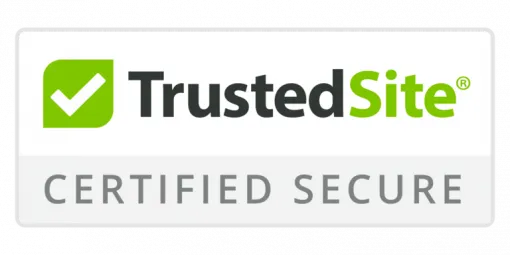You're preparing for a surge in website traffic, but you're unsure if your site can handle the load. Conducting load testing is essential to ensure your high-traffic website doesn't buckle under pressure. By simulating a large number of concurrent users, you'll identify potential bottlenecks and assess resource utilization.
But where do you start? Defining clear performance benchmarks and key performance indicators (KPIs) is the first step. You'll need to measure user experience metrics like response times and error rates. Here's a step-by-step guide on how to implement load testing for your website:
- Define Performance Benchmarks and KPIs:
- Establish what metrics are critical for your website's performance. Common KPIs include response times, error rates, and server utilization.
- Identify acceptable thresholds for these metrics based on user expectations and business requirements.
- Select Load Testing Tools:
- Various tools are available for load testing, such as Apache JMeter, LoadRunner, and Gatling. Choose a tool that fits your technical expertise and project needs.
- Ensure the tool can simulate real-world traffic scenarios and generate detailed reports.
- Create Test Scenarios:
- Design scenarios that replicate real user behavior on your website. Include different user journeys and interactions, such as browsing, searching, and purchasing.
- Determine the number of concurrent users to simulate and the duration of the test.
- Set Up the Test Environment:
- Use a staging environment that mirrors your production setup as closely as possible. This includes hardware, software, and network configurations.
- Ensure that the test environment is isolated from your live site to avoid disruptions.
- Execute the Load Test:
- Run the load test during off-peak hours to minimize the impact on actual users if using the production environment.
- Monitor the system's performance in real-time, paying close attention to response times, error rates, and server load.
- Analyze the Results:
- Review the data collected during the test to identify bottlenecks and performance issues.
- Compare the results against your predefined benchmarks and KPIs.
- Optimize and Retest:
- Implement changes to address the identified issues. This may involve optimizing code, upgrading hardware, or tweaking server configurations.
- Conduct additional load tests to verify that the optimizations have resolved the issues.
By following these steps, you can effectively conduct load testing for your high-traffic website and ensure it performs reliably under heavy loads.
Understanding Load Testing Basics
To grasp the fundamental principles of load testing for your side hustle's online platform, you need to understand that it involves simulating a large number of concurrent users accessing your website to evaluate its performance under various traffic conditions.
This process lets you gauge how well your website handles stress, identifies potential bottlenecks, and helps you optimize its performance, ensuring your side hustle can scale effectively.
You'll encounter various load testing types, each serving distinct purposes, such as endurance, spike, and stress testing. Understanding the nuances of each type will allow you to tailor your testing approach to your specific business needs.
For instance, endurance testing can verify your website's stability over long periods, while spike testing assesses its ability to handle sudden traffic surges, which is crucial for promotions or seasonal sales.
It's also crucial to dispel common misconceptions surrounding load testing. For instance, some believe that load testing is a one-time activity, when in fact, it's an ongoing process that should be integrated into your side hustle's development lifecycle.
Others assume that load testing is solely focused on identifying performance issues, when it can also reveal scalability and reliability problems.
By recognizing these misconceptions, you'll be better equipped to design and execute effective load tests that provide valuable insights into your website's performance.
Preparing for Load Testing
As you prepare for load testing your side hustle's website, you'll need to clearly define your goals, such as determining the maximum number of users your site can handle or identifying performance bottlenecks.
Next, you'll identify key performance indicators (KPIs) that align with these goals, like response times, throughput, and error rates.
Defining Load Testing Goals
Defining load testing goals for your side hustle's online platform is a critical step in preparing for load testing, as it enables you to determine what aspects of your website's performance to measure and evaluate.
By setting clear load testing objectives, you can establish performance benchmark criteria that guarantee your website meets user expectations and supports your business growth.
When defining your load testing goals, consider the following key factors:
- Business requirements: What're the essential business processes that your side hustle's platform must support, and what're the minimum performance requirements for these processes?
- User experience: What's the expected user experience for your platform, and how will you measure it?
- System resources: What're the system resources (e.g., CPU, memory, network bandwidth) required to support your platform's traffic and usage patterns?
- Scalability: How will your platform scale to meet increasing traffic and usage demands, and what're the performance implications of this scalability?
Identifying Key Performance Indicators
Identifying Key Performance Indicators
With your side hustle goals firmly established, identifying the key performance indicators (KPIs) that will help you measure the success of your efforts becomes your next critical step in preparing for actual execution.
You'll need to pinpoint the key metrics that will indicate whether your side hustle is meeting its performance benchmarks. These KPIs will likely include metrics related to customer experience, such as response times, error rates, and service delivery times.
You'll also need to evaluate growth patterns and scalability factors, such as how your side hustle handles increased demand and high customer volumes. Identifying threshold limits for these metrics will help you understand when your side hustle is approaching its breaking point.
For example, if your response time to customer inquiries exceeds 24 hours, you may regard it as a failure. By establishing clear KPIs and threshold limits, you'll be able to effectively measure the performance of your side hustle and make data-driven decisions to optimize its success.
Setting Test Environment Parameters
Now that you have a clear understanding of the KPIs that will measure the success of your side hustle, you can start configuring the test environment parameters that will simulate the real-world conditions your business is likely to encounter.
This involves setting up configurations that accurately reflect your target environment. To achieve this, you'll need to take into account the following parameters:
- Customer Distribution: Define the geographic distribution of your customers to accurately simulate demand from different regions.
- Market Conditions: Replicate various market conditions, such as economic fluctuations and competitor actions, to test your business's resilience under different scenarios.
- Sales Patterns: Mimic real-world sales patterns, including peak seasons, holiday rushes, and unexpected demand surges.
- Resource Utilization: Monitor resource utilization, such as inventory, staffing, and financials, to identify potential bottlenecks.
Utilize business analytics tools to create and execute these test configurations. These tools provide the necessary insights to design, execute, and analyze tests, enabling you to identify performance issues and optimize your side hustle for high demand conditions.
Choosing Load Testing Tools
As you start choosing load testing tools for your side hustle's website, you'll need to evaluate cloud-based options that offer scalability and flexibility, as well as open-source alternatives that provide customization and cost-effectiveness.
Your tool of choice should be able to simulate a large number of concurrent users, handle various types of requests, and provide detailed reports on performance metrics.
Cloud-Based Tool Options
When selecting tools to optimize your side hustle's online presence, you'll need to evaluate various cloud-based options that can simulate a large number of concurrent users and provide actionable insights into your site's performance under heavy loads. To ensure your side hustle can handle traffic spikes, consider cloud scalability strategies and invest in performance monitoring tools that provide real-time data.
Here are four key factors to take into account when evaluating cloud-based tools for your side hustle:
- Scalability: Can the tool simulate a large number of concurrent users and scale to meet your side hustle's needs as it grows?
- Ease of use: Is the tool easy to set up and use, or does it require extensive technical expertise? This is crucial if you're juggling multiple responsibilities.
- Reporting and analytics: Does the tool provide detailed reports and analytics to help you identify performance bottlenecks and improve user experience?
- Integration with existing tools: Does the tool integrate with your existing performance monitoring tools and other systems, making it easier to manage everything from one place?
Open-Source Alternatives
When evaluating open-source load testing tools for your side hustle, it's essential to consider their customizability, flexibility, and compatibility with your existing infrastructure. These factors directly impact the tool's effectiveness in simulating realistic traffic scenarios, which is crucial for ensuring your side hustle can handle increased demand. While you might already be familiar with JMeter, several alternatives are worth exploring.
For instance, Gatling offers a commercial-grade reporting dashboard and supports massive-scale testing, which can be invaluable as your side hustle grows. The Locust framework, with its distributed, Python-based architecture, allows you to simulate traffic effectively, making it a great choice if you prefer Python. Similarly, k6 provides automatic checks and a test builder for streamlined scripting, which can save you time and effort.
Other tools to consider include Artillery, known for its straightforward, declaration-based syntax that simplifies usage, and Tsung, which offers clustering and dynamic injection capabilities. Siege prioritizes performance with its async-friendly, multi-threaded design, making it ideal for high-performance needs. Lastly, LoadNinja delivers actionable insights through automated metric correlation and anomaly detection, helping you identify and address potential issues quickly.
Simulating Real-World Traffic Scenarios
To effectively gauge your side hustle's website performance under high traffic conditions, you must replicate a variety of real-world traffic scenarios that mirror the diverse behaviors, locations, and devices of your potential customers. This entails a thorough examination of user behavior analysis and traffic pattern modeling to pinpoint the most crucial scenarios to simulate. By doing this, you can assess your website's performance under different situations, such as sudden traffic surges or extended periods of high usage.
Here are four key scenarios to simulate:
- Peak hour traffic: Simulate a large influx of visitors to your side hustle's website during peak hours (e.g., lunch breaks or evening commutes) to test its performance under heavy loads.
- Geographic traffic distribution: Simulate traffic from various geographic locations to evaluate your website's performance across different regions and network conditions.
- Device and browser diversity: Simulate traffic from a range of devices (e.g., desktops, laptops, mobile devices) and browsers to ensure your side hustle's website performs well across multiple platforms.
- User behavior patterns: Simulate different user behavior patterns, such as browsing, searching, or purchasing, to test your website's performance under various usage scenarios related to your side hustle.
Identifying Performance Bottlenecks
As you analyze the results of your load tests for your side hustle's website, you're likely to uncover performance bottlenecks that need attention.
You'll want to scrutinize server resource utilization closely, checking for CPU, memory, or disk usage spikes that could be slowing your site down.
Server Resource Utilization
By scrutinizing server resource utilization patterns for your side hustle's website, you'll uncover performance bottlenecks that can cripple your site under peak loads, revealing exactly where hardware or software upgrades are needed to maintain responsiveness.
Effective server monitoring is essential to identifying these bottlenecks, allowing you to adjust resource allocation and optimize server performance, ensuring a smooth user experience and maximizing your side hustle's potential.
To analyze server resource utilization for your side hustle, focus on the following metrics:
- CPU Utilization: Monitor CPU usage to detect processor-intensive tasks or scripts that may be overloading the server, which could hinder the growth of your side hustle.
- Memory Allocation: Track memory usage to identify potential RAM bottlenecks, which can greatly slow down your website's response times and frustrate users.
- Disk I/O Operations: Analyze disk I/O patterns to detect bottlenecks caused by excessive read/write operations or slow disk speeds, ensuring that your side hustle's data management is efficient.
- Network Bandwidth Utilization: Examine network bandwidth usage to identify potential network congestion or throughput issues, which could affect the accessibility and performance of your side hustle's online presence.
Network Latency Issues
With your side hustle gaining traction, it's essential to address network latency issues that can affect the responsiveness and overall performance of your online platform. Latency problems can be particularly detrimental to a high-traffic website, leading to user frustration and potential loss of business.
To tackle this, employ latency measurement techniques like ping tests, traceroutes, and network packet analysis to identify areas where data packets are experiencing delays or losses. These tools will help you pinpoint specific issues that need attention.
You might find that network congestion is a significant factor affecting latency. To mitigate this, consider solutions such as enhancing network protocols, upgrading your network infrastructure, or implementing content delivery networks (CDNs).
By addressing these issues, you can substantially improve the performance and responsiveness of your side hustle's website, ensuring a smoother user experience for your customers.
Effective latency measurement and network congestion solutions are crucial steps to make certain your online platform can handle increased traffic, helping you grow and sustain your side hustle successfully. By proactively addressing these challenges, you'll be well on your way to optimizing your website's performance.
Optimizing Server Configuration
You can greatly enhance the performance of your side hustle's website under high traffic by fine-tuning several key server configuration parameters, including thread counts, connection timeouts, and caching mechanisms. By optimizing these parameters, you'll be able to handle increased traffic without sacrificing performance.
To optimize your server configuration for your side hustle, consider focusing on the following key areas:
- Thread count and connection timeouts: Adjust your thread count to ensure your server can handle the maximum number of concurrent requests. Also, set connection timeouts to prevent idle connections from consuming resources, which is crucial when your side hustle website starts gaining traction.
- Caching strategies: Implement caching mechanisms to reduce the load on your server. Use techniques like output caching, fragment caching, or object caching to cache frequently requested resources, helping your side hustle website run smoothly even during peak times.
- Server scaling and resource allocation: Set up server scaling to dynamically allocate resources based on traffic demand. This ensures your side hustle website has enough resources to handle increased traffic as your business grows.
- Security configurations and monitoring: Regularly review and update your security configurations to prevent common web attacks. Also, set up server monitoring to detect potential issues before they affect performance, safeguarding your side hustle's online presence.
Fine-Tuning Code for Performance
Fine-tuning your side hustle website for performance involves meticulously analyzing and refining every detail, from database queries to front-end rendering, ensuring it can handle high traffic without sacrificing speed or reliability. To achieve this, you'll want to leverage code optimization techniques such as caching, minification, and compression to reduce the load on your servers.
Additionally, utilizing performance profiling tools like New Relic or Datadog can help you identify bottlenecks and areas for improvement. These tools provide granular insights into your code's performance, allowing you to make data-driven decisions about where to focus your optimization efforts for your side hustle.
| Code Optimization Technique | Description | Performance Impact |
|---|---|---|
| Caching | Stores frequently-used data in memory for faster access | 20-30% reduction in server load |
| Minification | Removes unnecessary code characters to reduce file size | 10-20% reduction in page load time |
| Compression | Reduces the size of files and data transmitted over the wire | 30-50% reduction in bandwidth usage |
| Lazy Loading | Loads content only when it's needed, reducing initial page load | 20-30% reduction in initial page load time |
Executing Load Testing Cycles
Load testing cycles are crucial for ensuring the performance of your high-traffic side hustle website, simulating a large number of concurrent user interactions to identify bottlenecks and benchmark scalability under real-world conditions.
By executing load testing cycles, you'll be able to validate your testing strategies and ensure that your side hustle website can handle a large influx of traffic without compromising user experience.
When executing load testing cycles for your side hustle, consider the following key factors:
- Test duration: Ensure that your test duration is long enough to capture performance degradation over time.
- User concurrency: Simulate a realistic number of concurrent users to accurately measure system performance.
- Request frequency: Space out requests to mimic real-world traffic patterns.
- Resource utilization: Monitor system resource utilization, such as CPU, memory, and disk usage, to identify potential bottlenecks.
Analyzing Load Testing Results
Analyzing the results of load testing cycles is a critical step in identifying performance bottlenecks and determining the effectiveness of the testing strategies employed for your side hustle's online platform.
You'll need to collect and process data from various sources, including server logs, database queries, and network traffic. To make sense of this data, you'll use result interpretation techniques, such as identifying patterns, trends, and correlations. Data visualization tools, like charts, graphs, and heat maps, will help you to better understand complex data sets and communicate findings to stakeholders or partners involved in your side hustle.
As you analyze the results, you'll focus on key performance indicators (KPIs) such as response times, throughput, and error rates. You'll also examine system resource utilization, like CPU, memory, and disk usage, to pinpoint potential bottlenecks that could affect the user experience on your platform.
By combining data from multiple sources and applying result interpretation techniques, you'll gain insights into system behavior under load and identify areas for improvement. Effective analysis will enable you to refine your testing strategies, optimize system performance, and ensure that your side hustle's website or app delivers a seamless user experience.
Implementing Performance Improvements
By applying the insights gained from analyzing load testing results, you can now target specific performance bottlenecks and implement optimizations to improve response times, increase throughput, and reduce error rates on your high-traffic side hustle website or app.
To achieve this, you'll focus on implementing caching strategies, database optimization, and content delivery networks (CDNs) to reduce the load on your servers. You'll also prioritize code refactoring to eliminate inefficient code and reduce the overhead of third-party integrations.
Here are four key areas to focus on for your side hustle:
- Optimizing server-side performance: Implement caching mechanisms, such as Redis or Memcached, to reduce the load on your databases and improve response times.
- Improving content delivery: Use CDNs to distribute content across multiple geographic locations, reducing latency and improving user experience.
- Refactoring code: Identify and eliminate inefficient code, and optimize algorithms to reduce computational overhead.
- Enhancing scalability: Implement traffic management solutions, such as load balancers, and scalability solutions, like auto-scaling, to guarantee your infrastructure can handle increased traffic.
Conclusion
As you conclude your load testing journey for your side hustle's website, remember that your online presence is like a small business storefront.
Just as a single broken window can ruin the entire appearance, a single bottleneck can cripple your site.
Consider the story of a small e-commerce store that increased its sales by 50% after identifying and fine-tuning a single performance issue.
By meticulously testing and tuning your site, you'll guarantee a seamless user experience, even under the most demanding traffic conditions, ensuring your side hustle thrives.
















































0
View comments